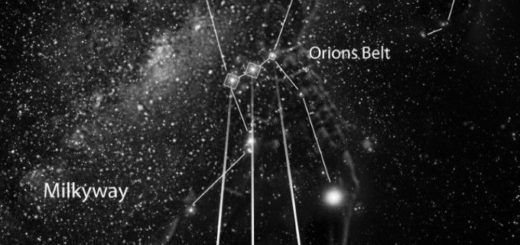Astronomers puzzled by a supermassive black hole moving strangely in deep space

Why it’s on the run is unclear, but its unusual velocity may be caused by a recent merger or an unseen partner.
A supermassive black hole, about 3 million times more massive than the sun, is on the run. Around 230 million light-years from Earth, the black hole has been disturbed and now it’s moving peculiarly at a speed of around 110,000 miles per hour — but astronomers aren’t quite sure why.
In a new study, published in the Astrophysical Journal on Friday, a team of astronomers observed supermassive black holes at the heart of galaxies, looking for signs they may be moving unusually. In space, everything is moving in all sorts of directions thanks to the push and pull of gravity, but most black holes are moving in the same direction at the same speed as their host galaxy.
“We don’t expect the majority of supermassive black holes to be moving; they’re usually content to just sit around,” Dominic Pesce, an astronomer at the Harvard and Smithsonian Center for Astrophysics and lead author on the study, told the Harvard Gazette.
Not so for the galaxy J0437+2456 and its SMBH. It’s not content just sitting around.
In 2018, Pesce and colleagues noticed the supermassive black hole at the center of J0437+2456 may have been acting a little strange. Following up on their original observations of the galaxy with the now-defunct Arecibo Observatory in Puerto Rico and the Gemini Observatory in Hawaii and Chile, they now describe the rare and funky motion of the galaxy’s mammoth black hole.
To study the movement of black holes — invisible cosmic beasts — the team had to focus on the area surrounding the holes. Circling the SMBH at the center of a galaxy is an “accretion disk” of debris and dusty material that is slowly being gobbled up. It’s a great source of light and radio waves. The team looked at SMBHs that contained water in their disks and looked for a telltale signal the circling water throws off — the extremely sci-fi sounding phenomenon known as a “maser.” This emission can be used to measure a black hole’s velocity.
Of the 10 black holes they studied, only the one at the center of J0437+2456 was unusual. It was not moving at the same velocity as its home galaxy.
But how did it come to be so disturbed? The team aren’t really sure but they offer some possibilities.
The focus of their studies has been to use masers to identify pairs of SMBHs or black holes that have recently merged together. In the merger scenario, the new black hole can “recoil,” which may explain why its velocity is different from its home galaxy. If it’s a pair of black holes — a binary system — then the violent push and pull of gravity might be causing disturbances to its velocity.
There’s also the possibility it is an SMBH from an external galaxy that recently collided with J0437+2456.



 Creators of mankind
Creators of mankind Description of “Tall white aliens”
Description of “Tall white aliens” Where they came from?
Where they came from? About hostile civilizations
About hostile civilizations The war for the Earth
The war for the Earth “Tall white aliens” about eternal life
“Tall white aliens” about eternal life Video: “Nordic aliens”
Video: “Nordic aliens” Aliens
Aliens Alien encounters
Alien encounters The aliens base
The aliens base UFO
UFO Technology UFO
Technology UFO Underground civilization
Underground civilization Ancient alien artifacts
Ancient alien artifacts Military and UFO
Military and UFO Mysteries and hypotheses
Mysteries and hypotheses Scientific facts
Scientific facts


















